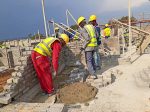A dramatic and unprecedented collapse in beef exports has delivered one of the most significant economic shocks to Namibia in recent years, forcing a national reckoning with the structural vulnerabilities of its agricultural sector. According to a comprehensive analysis by Simonis Storm, the first half of 2025 saw export volumes plummet, triggering a chain reaction that threatens GDP growth, fiscal stability, and the livelihoods of rural communities.
The numbers paint a stark picture. First-quarter beef exports fell by 51.4% year-on-year to 1.43 million kilograms. The situation worsened in the second quarter, with a further 0.2% decline to a mere 40,000 kilograms—a staggering drop from over 9 billion kilograms the previous year. Crucially, this contraction is not due to a lack of international appetite for Namibian beef, which remains highly sought after in premium markets across Europe, Norway, and Asia. Instead, the collapse is a symptom of domestic dynamics, primarily the biological imperative to rebuild national herds after the severe drought of 2024, compounded by movement restrictions imposed to control outbreaks of lumpy skin disease.
This has created a paradoxical scene across the country: green pastures and full dams coexist with empty abattoirs and halted export flows. The core of the issue lies in the drought-recovery cycle. The 2024 drought forced widespread destocking, depleting herds. When heavy rains arrived in early 2025, farmers’ incentives shifted instantly from selling to rebuilding, retaining animals for breeding. The number of cattle marketed fell by almost 60% in the first two quarters. Live exports to South African feedlots, which typically absorb up to 80% of marketed animals, collapsed by three-quarters.
The macroeconomic consequences are severe and multifaceted. The agriculture sector, dominated by livestock, contributes roughly 5% to Namibia’s GDP. The direct farm-gate revenue loss from halved exports is estimated at N$600–800 million for the first half of the year. When downstream effects—such as abattoirs operating far below capacity and ancillary transport and service businesses underutilised—are factored in, the total drag on national GDP growth for 2025 is projected to be between 0.5 and 1.0 percentage points.
The shockwaves extend to inflation and the country’s external balances. With domestic beef supplies constrained, producer prices have surged, with weaner calf prices up 23.8% year-on-year in the second quarter. This pushed retail beef prices higher, forcing supermarkets to significantly increase imports of pork and poultry to meet consumer demand. Pork imports alone surged over 70% in the first quarter. While this substitution cushions consumers, it simultaneously drains foreign exchange reserves, worsening the trade deficit and delivering a “double blow” to the current account. Simonis Storm projects headline CPI inflation at 3.8% for 2025, rising to 4.1% in 2026.
Fiscally, the government is also feeling the pinch. Reduced abattoir throughput translates to lower corporate tax receipts, while falling rural household incomes shrink VAT collections. Any potential need for government bridging support for struggling processors would add further strain to public finances already burdened by a debt-to-GDP ratio of approximately 85%.
Beyond these cyclical impacts, the crisis has exposed a critical structural weakness: Namibia’s over-reliance on live exports to South Africa. This channel, while efficient in good times, leaves the entire value chain crippled when farmers retain stock or movement is restricted. The report warns that without intervention, the country risks a perpetual cycle of drought-driven liquidation followed by wet-season retention and export collapse, never breaking out of vulnerability.
The forward view from Simonis Storm is that 2025 will be a tough year, with herd rebuilding expected to deepen. A return to normal export levels is not anticipated until 2027. However, the analysts argue that this period must be used as a strategic reset, not passively endured. They outline three essential interventions: recalibrating the balance between live exports and domestic slaughter with new incentives; modernising veterinary logistics with digital vaccine passports and pre-approved movement corridors; and accelerating market diversification into Asia and the Middle East.
Financial innovation is also deemed crucial. The introduction of drought-indexed restocking loans, collateralised by rainfall data and livestock values, would provide farmers with the liquidity needed to rebuild herds without destroying their cash flow.
The report concludes with a clear conviction: the 2025 collapse is an inflection point, not just a crisis. If Namibia acts decisively, it can lay the foundation for a stronger, more resilient livestock economy. If it does not, the country will remain trapped in a boom-and-bust cycle, forever vulnerable to the weather and the demand from South African feedlots. The rains have provided a reprieve; it is now up to policymakers and industry to turn that reprieve into renewal.










